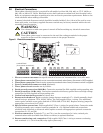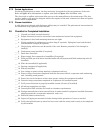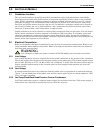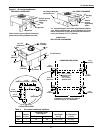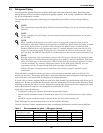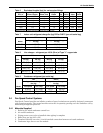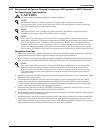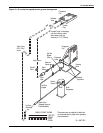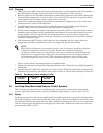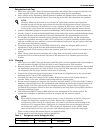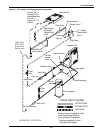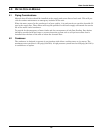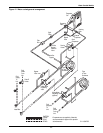
Air Cooled Models
20
3.4.2 Dehydration/Leak Test and Charging Procedures for R22 (standard) or R407C (Optional)
Fan Speed Control Type Condenser
Dehydration/Leak Test
1. Make sure unit is OFF. Open all disconnects and remove all fuses except control fuses. On units
supplied with circuit breakers, open all breakers except for the transformer.
2. Add a jumper to the Fan Safety Switch between Common and Normal Open and disconnect the
wire connected to the Normally Closed. Turn unit disconnect ON. (Fan operation not required.)
3. Connect refrigeration gauges to the suction and discharge service valves of the compressor. Open
all compressor service valves.
4. To energize the liquid line solenoid valves through the control system power, set the control
temperature setpoint (see operation manual) to 60°F (15°C) and set the % relative humidity
setpoint higher than the conditioned room ambient to ensure that solenoid valves and hot gas
bypass valves are open during the dehydration process.
5. Pressurize the system circuit(s) to 150 PSIG (1034 kPa) by using dry nitrogen with a trace of
refrigerant. Check system for leaks with suitable leak finder.
6. After completion of leak testing, release the test pressure (per local code) and pull a deep vacuum
on the system with a suitable pump.
7. After four hours, check the pressure readings, and if they have not changed, break vacuum with
refrigerant. Pull another vacuum to 250 microns or less. Recheck the pressure after two hours.
After completing this step, pressurize the circuits with refrigerant (R407C liquid or R22 vapor per
unit nameplate) until suction and discharge pressures have equalized.
!
CAUTION
All local codes for handling refrigerant must be followed.
NOTE
As R22 and R407C are similar in properties, proper safety equipment and proper
refrigeration tools are required on both types. Check unit nameplate for correct refrigerant
type before topping off or recharging a system.
NOTE
Refrigerant R407C uses a POE (polyol ester) lubricant. The R407C refrigerant must be
introduced and charged from the cylinder only as a liquid.
NOTE
When installing field piping, care must be taken to protect all refrigerant lines from the
atmosphere, especially when using refrigerants with POE oils. Do not allow the piping to stand
open to air for more than 15 minutes. Units designed for R407C have a compressor which
contains POE oil that is very hygroscopic; that is, it quickly absorbs water from the air. The
longer the compressor piping is left open to air, the harder it will be to fully evacuate. If left
open too long, the POE oil may need to be replaced before achieving the required vacuum level.
NOTE
The above allows the technician to use unit 24 VAC power and controls to open liquid line
solenoid valve(s) and hot gas bypass solenoid valve(s) for the dehydration process. If no
power is at the unit disconnect, the technician is to use a separate 24 VAC source rated at
75 VA and connect to the system liquid line solenoid valve(s) and hot gas bypass solenoid
valve(s) directly.



